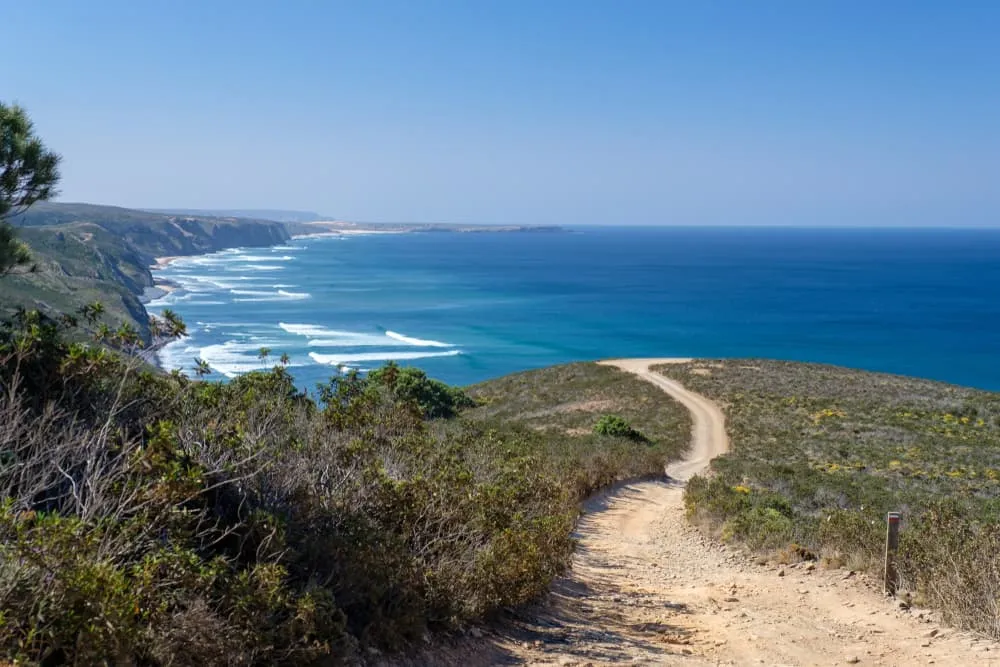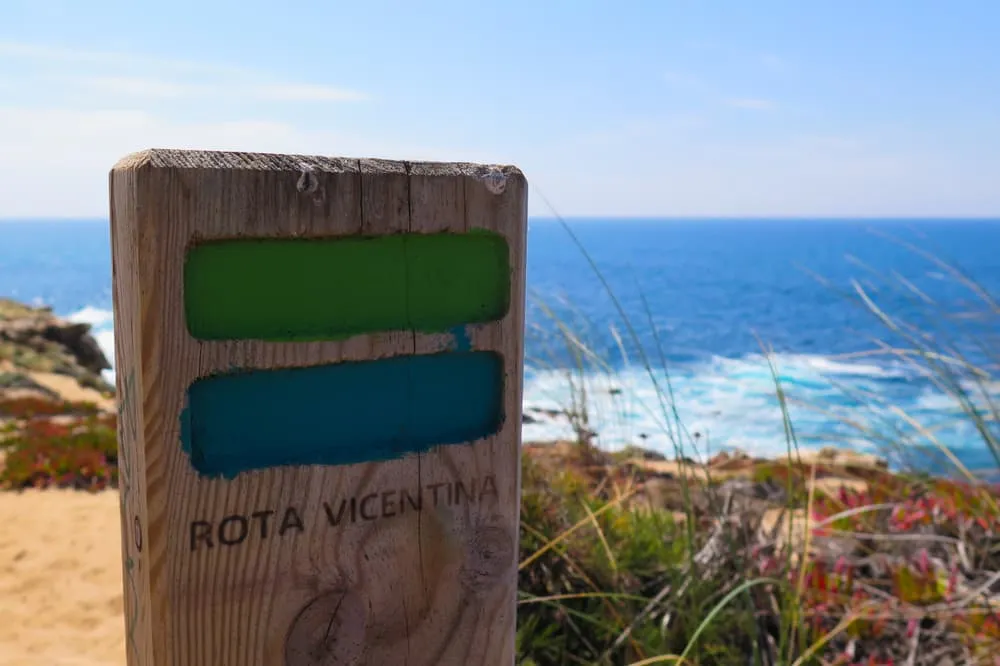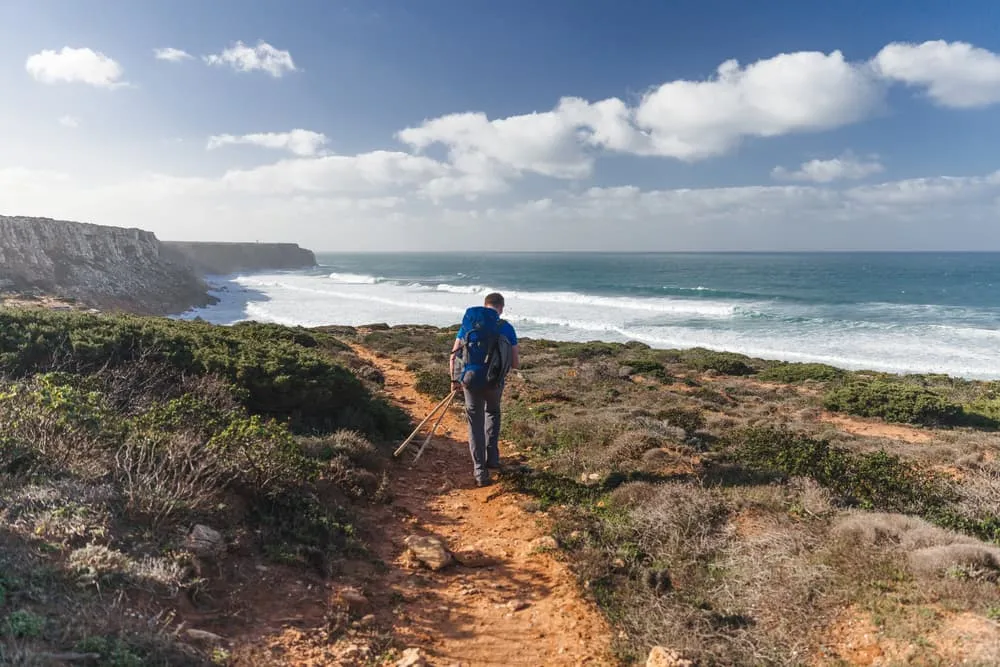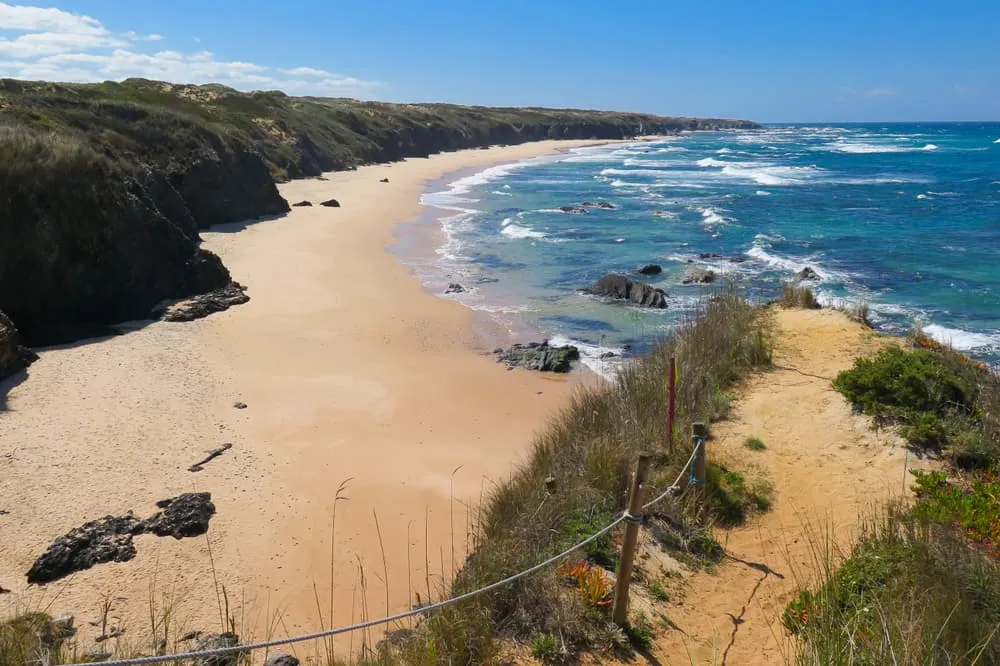Fancy hiking one of the world’s most beautiful coastal trails along the rugged, sunkissed coast of southern Portugal? Explore secluded coves, endless stretches of deserted beaches and cute little fishing villages on the Fisherman’s Trail. The route follows the rocky shores of the Atlantic Ocean on sandy, single track pathways that were created by the local fishermen. If you’re looking for sun, solitude and spectacular sea views, then the Fisherman’s Trail is calling you. Don’t forget your swimsuit!
The Fisherman’s Trail is part of the Rota Vicentina trail network in southern Portugal. The well-marked trail winds along the coast from Porto Covo to Lagos for almost 230 km. You can hike it in 11 stages, though it is possible to do the northern or southern half of the route separately. Distances are manageable, but keep in mind that over 60% of the paths are sandy, making the walking a little bit harder. If you're looking for unforgettable walking holidays in Portugal, this trail is a true gem. In this blog post, we share our tips and tricks on how to hike the Fisherman's Trail.










Comments